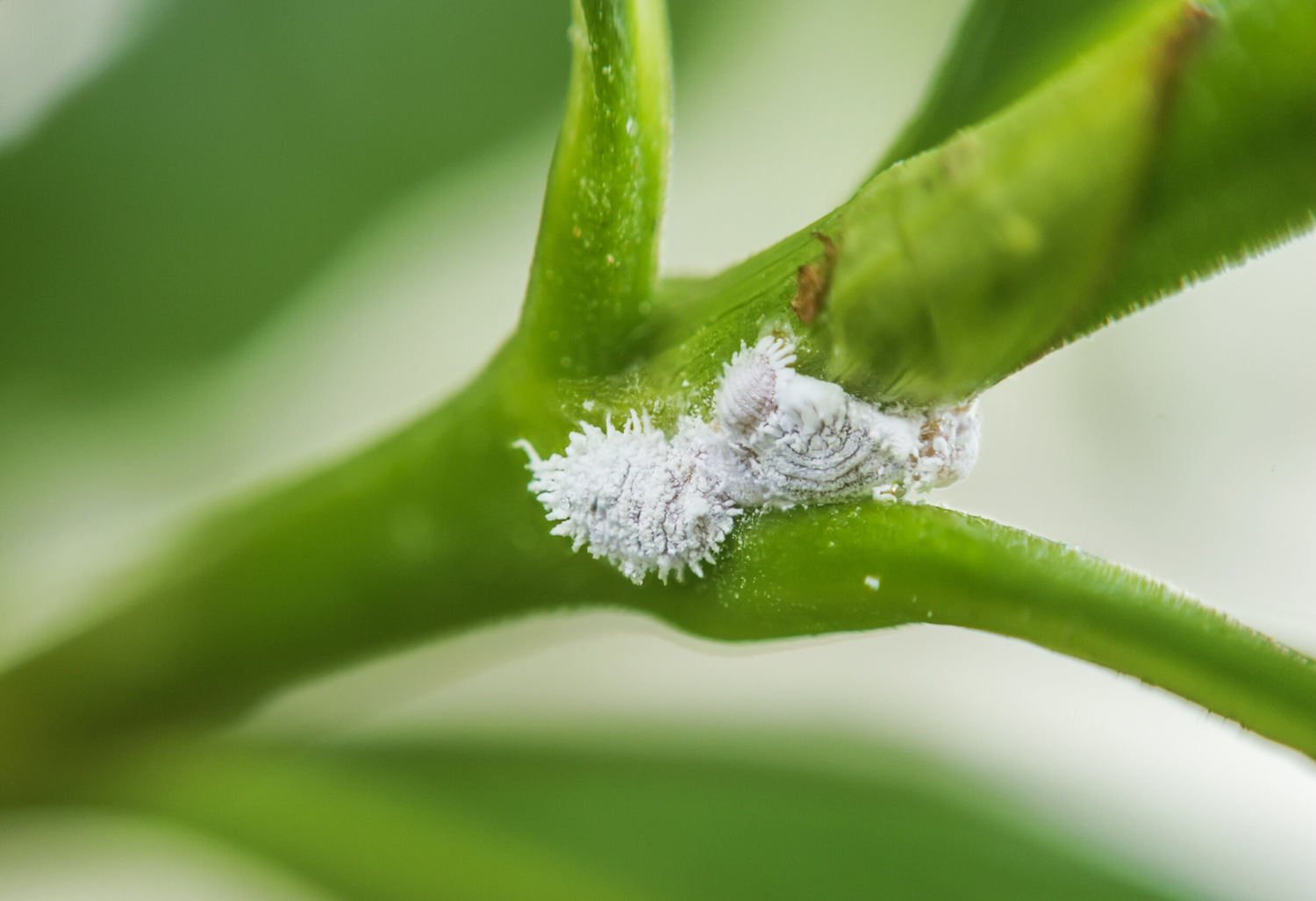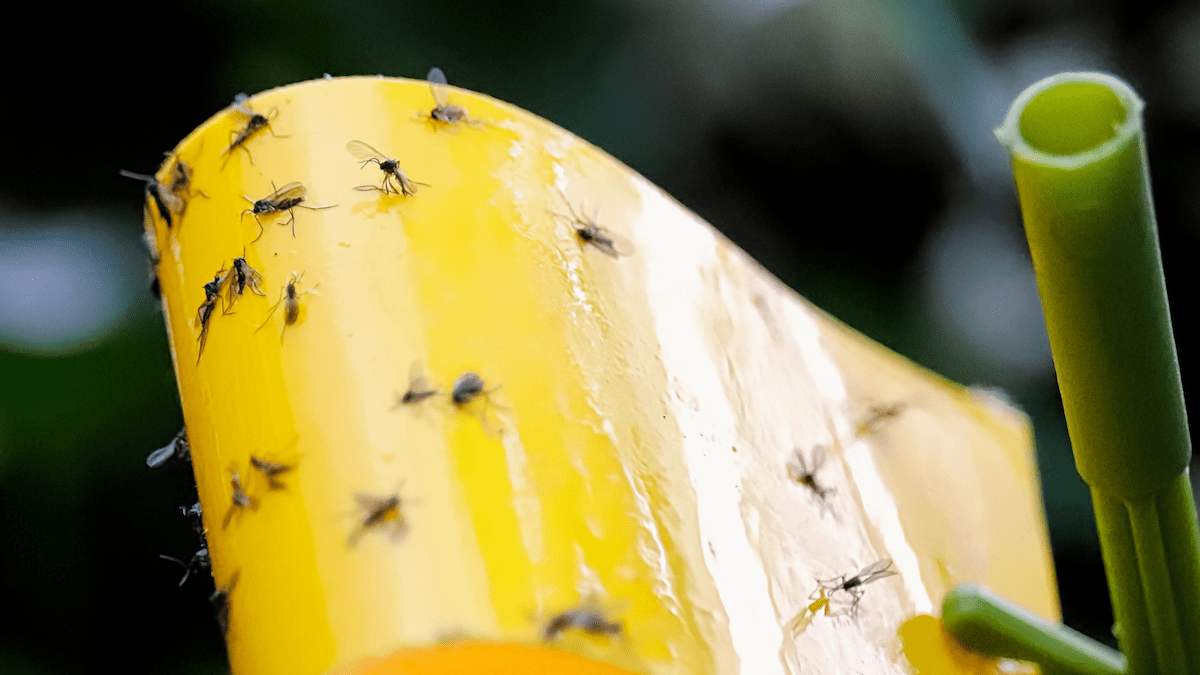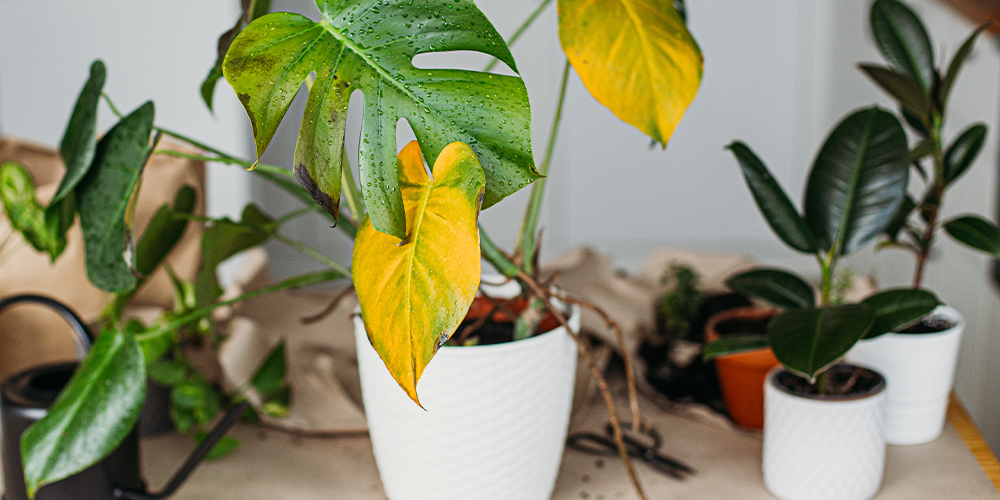Aphids:
Aphids are small, soft-bodied insects that are pear-shaped ranging from 1/16 to ⅛ of an inch in size. Woolly aphids have a body that is covered by a waxy substance while powdery aphids have a waxy coating on their body. Some adults will have wings while others will not have wings at all. Aphids are most often located on new shoots or the underside of leaves. Some feed on roots.
They feed on plant sap causing leaves to turn yellow and become deformed. Growth may be impaired and new buds will have an abnormal development. Aphids have their way of feeding on plant tissues; as they feed, they produce a sticky substance called honeydew that makes leaves glisten. Sooty mold fungi can develop on the honeydew, making dark spots on the plant organs’ surface.










